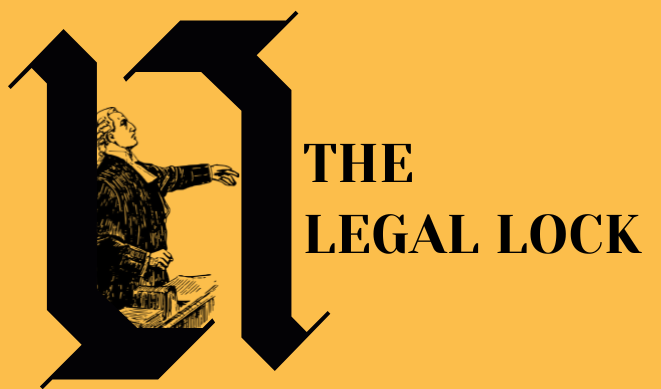Equivalent Citation: Civil Appeal No. 639, of 2000
Introduction:
Ms. Chandrima Das, who filed the aforesaid petition under Article 226 of the Indian Constitution, was a practicing lawyer in the Calcutta High Court when the matter was heard for the first time in 1998. She filed on behalf of Smt. Hanuffa Khatoon, a Bangladeshi national who was gang-raped by railway staff at the Eastern Railway’s Howrah Station. The laws which were used in the case was:
- Writ Petitions under Articles 32 and 226 to enforce the fundamental rights.
- Vicarious Liability is a tort in which a person who did not cause the harm but has a legal relationship with the person who did cause the harm is held liable.
- Article 3,5,7,9 and 21 of the Indian Constitution.
Facts of the Case:
- The Union Board’s elected representative was Ms. Hanuffa Khatoon. On the 26th of February 1998, she came to Howrah Railway Station to board a specific Jodhpur Express to carry out her professional obligations. When Ashok and Siya Ram Singh (railway officials) contacted her and confirmed her reservation, she had a waitlisted ticket in the Ladies Waiting Room.
- Siya Ram returned to her after a few hours, this time with a boy named Kashi, and invited her to follow him to a restaurant if she wanted to eat for the night. As a result, she and Kashi walked to a nearby restaurant, where she promptly vomited and returned to the Waiting room. At around 9 p.m., Ashok Singh and Rafl Ahmed (also a Howrah Railway employee) approached her and requested her to accede to their request. Initially, she was skeptical as she was validated by the women attendants as to the men’s credentials as employees, following which she was taken to a Yatri Niwas that had been reserved in the name of Ashok.
- Two employees were already inside Hanuffa Khatun’s room and they had alcohol with them and they were forcing her to consume it. All the four brutally violated her leaving her dazed. However, she managed to flee to the platform and saw Ashok and Siya. On the pretext of helping her get out of this situation, they said her to accompany them.
- After that, he took her to the flat of his friend Ram Samiram Sharma and raped her. When she resisted aggressively, they gagged her mouth and nostrils, attempting to kill her, and she bled profusely as a result.
- She was later rescued by Jorabagan Police as a result of her cries for help.
Issues Raised:
- Whether Smt. Hanuffa Khatoon should have sought damages in the Civil Court and that the subject should not have been reviewed in a petition under Article 226 under the scope of private law as opposed to tort law?
- Is there any evidence that the respondents have ‘locus standi’?
- Is it possible for a victim of a foreign national to seek redress under public law when there is no provision in the Constitution for non-citizens who have been violated of their fundamental rights?
- Whether the Central Government or the Union of India can be held vicariously accountable for rape perpetrated by railway staff and hence be held liable to pay damages/compensation.
Contentions raised by the Petitioner:
Because the victim is not an Indian national, the petitioners claim they will not be obliged to compensate her. They claimed that because the accused’s actions were personal, they would be prosecuted separately and, if found guilty, penalized and obliged to pay a fine or compensation, and the Railways/Union of India would not be held vicariously accountable. They said that the respondent should have gone to the Civil Court under the ambit of private law vis-à-vis law of torts.
Judgement Given as per ‘Ratio Decidendi’
- The above case was heard about the case of A Regd. Society v. UOI to differentiate between the public and private law. The conflict between a group of people on one hand and the State/public bodies on the other are known as public law. This is done to prevent public authorities from behaving arbitrarily and to ensure that the rule of law is followed. It was also emphasized that the question must be decided on a factual paradigm in each case.
- The Court also stated that, in line with previous decisions, Public Law remedies have been extended to the spheres of contracts and tort law, and that, while the line between private and public law is hazy, public law will apply where public functionaries are involved and the matter concerns a violation of Fundamental Rights. Here, Rape will be considered as a violation of Fundamental Rights as held in the case of Bodhisattwa v. Ms. Subhra Chakravorty.
- The court also held in Dr. Satyanarayana Sinha v. S Lal and Co. that the foundation of Articles 32 and 226 is a personal right for the petitioner but if he employs Habeas Corpus or Quo Warranto, the rule can be modified. Furthermore, the petition was filed in the public interest because the reliefs sought in the petition included compensation as well as relief for eradicating anti-social and criminal activities of various kinds at Howrah Railway Station, and because it fell within the scope of public interest litigation, any member of the public could file it.
- The bench went on to say that as a foreign national, Smt. Hanuffa Khatoon could neither be treated inhumanely, nor could she be exposed to physical violence at the hands of government officials who offended her modesty, and that her right under Article 21 had thus been infringed.
- It was also noted that the Court had heard petitions under Article 32 of the Constitution several times and had granted compensation to petitioners who had been injured by officers of the Government or any other public body in its numerous judgements.
- It also cited the Declaration on the Elimination of Violence against Women wherein the crime of rape will be covered under Article 2 of the Constitution which categorizes all kinds of violence against women. The court emphasized that these treaties bind all signature governments (India is one of them) and that the Universal Declaration of Human Rights and its principles may have to be read into local law if necessary.
- The state’s functions include not just the defense of the country and the administration of justice, but also education, commerce, social, economic, political, and even marital matters. The creation of several Yatri Niwas has been made to help people with boarding and lodging with payment under the concept of commercial activities of the UOI.
- If one of these workers commits a tort, the Union Government may be held vicariously accountable for the damages suffered by the individual injured by those employees. Especially when the police personnel in question used their official position to their advantage (here the accused got a room in the Yatri Niwas and booked in their name and credentials provided by the railways).
Conclusion:
This case established that where public officials are engaged and the subject involves a breach of fundamental rights or the execution of public duties, the matter falls within Public Law rather than Private Law.
The appeal was denied without prejudice, with the stipulation that the compensation is paid to the victim, Smt. Hanuffa Khatoon, by the High Commissioner for Bangladesh in India. There was no ruling regarding costs, and the payment to the High Commissioner had to be made within three months.
The case also looked at how the phrase life has been interpreted by the Supreme Court and how “rape” is a breach of Art. 21.







1 thought on “Case Brief |Chairman Railway Board vs. Mrs. Chandrima Das”